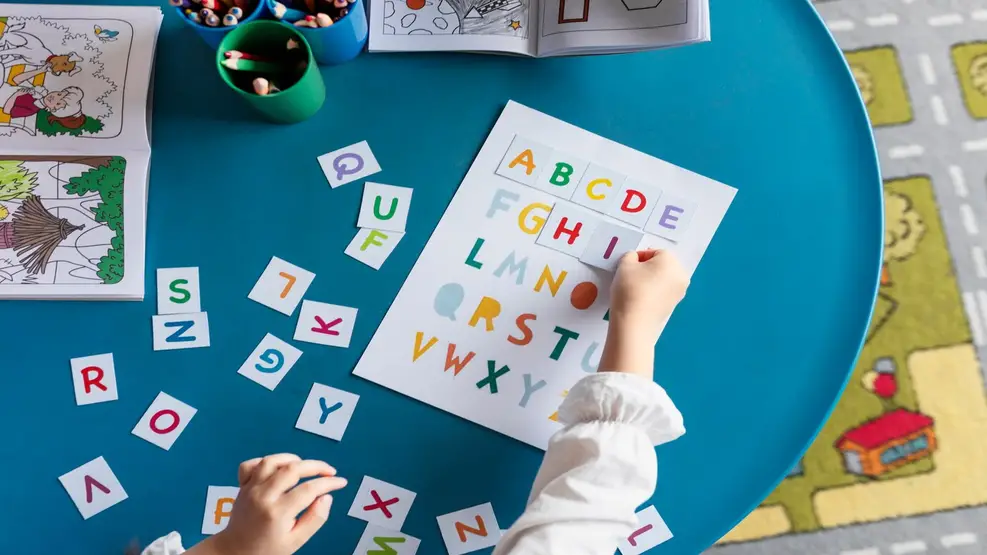Handwriting is a fundamental skill in a child’s education, and poor handwriting can have a significant impact on their school experience. Whether you’ve enrolled your child in some of the best schools in Tirupati, Nellore, Kavali, or anywhere else, it’s crucial to understand the problems and causes of bad handwriting in children to help them improve.
In this article, we will explore 10 common problems associated with poor handwriting and the underlying causes for each.
Underlying Causes for Bad Handwriting in Children
1. Illegible Words:
One of the most prevalent issues in poor handwriting is the illegibility of words. When children write, their words may appear messy and unclear, making it difficult for both teachers and parents to understand their work. Illegible handwriting can impact a child’s academic performance and create frustration.
Causes: Illegible handwriting can result from a variety of factors, including fine motor skill delays, developmental delays, and sensory differences. Fine motor skills refer to the coordination required for small, complex hand and finger movements. If your child’s fine motor skills are underdeveloped, their handwriting may be affected. It’s crucial to identify the specific cause to address the issue properly and seek intervention if needed.
2. Odd Sizing:
Children with poor handwriting often struggle to maintain consistent letter sizes, resulting in a chaotic and unorganized appearance of their writing. You might notice that some letters are too big, while others are too small.
Causes: Odd sizing can be attributed to a lack of exposure and practice in fine motor skills. Younger children, especially in preschool and kindergarten, may experience delays in fine motor skill development. Encouraging activities such as drawing, writing, coloring, beading, cutting, and gluing can help improve fine motor skills and address this issue.
Also Read: How to Improve Writing Skills of Kids in Primary School
3. Random Capitals:
Another issue that may arise in poor handwriting is the random use of capital letters mixed in with lowercase ones. This inconsistency can make their writing hard to follow and disrupt the flow of their work.
Causes: Random capitalization can be a result of fine motor skill delays and a preference for gross motor activities over writing. Some children may naturally gravitate towards activities like running and biking, neglecting the development of their fine motor skills. Encouraging your child to practice writing and fine motor activities can help improve consistency in their handwriting.
4. Slanted Letters:
Poor handwriting may involve slanted letters that do not align with the lines on the page. This can affect the overall legibility of the text and make it challenging to read.
Causes: Slanted letters could be a result of motor planning issues and visual motor integration challenges. Motor planning involves the ability to plan and execute motor movements, while visual motor integration pertains to integrating what you see with what your hand can produce in writing. These challenges can disrupt the writing process and result in slanted letters. Working on these areas can help straighten out the writing.

5. Letter Formation Problems:
Sometimes, children struggle with forming letters correctly. For example, letters like ‘g’ may not dip below the line, or ‘H’ may not touch the top of the line, making their writing less recognizable.
Causes: These problems are often linked to fine motor skill delays and the need for more focused practice on precise letter formation. Encouraging your child to work on specific letter formation can help address this issue.
6. Pressure Issues:
Children with poor handwriting might apply too much or too little pressure when writing, affecting the clarity and appearance of their words.
Causes: Pressure problems can result from a combination of fine motor skill challenges and sensory differences. It’s essential to explore various writing tools and surfaces to find the right balance that works for your child.
7. Spacing Issues:
Inconsistent spacing between letters and words is another issue associated with poor handwriting. Too much or too little space can make their writing look jumbled and challenging to read.
Causes: Spacing problems can be linked to fine motor skill delays and a lack of practice. Using tools like graph paper or a slant board can provide more structure and help improve spacing.
8. Fine Motor Problems:
Handwriting relies on fine motor skills, and children with poor handwriting may also face challenges with tasks like drawing, beading, or building with small objects. These challenges can extend beyond handwriting, affecting various activities that require precise hand and finger movements.
Causes: If your child is more inclined toward gross motor activities like running and biking, they may lack the practice required for fine motor skills. Encouraging a balance of activities and focusing on fine motor tasks can help improve their fine motor skills.
9. Constant Frustration:
Children with poor handwriting may become frustrated with their writing tasks, leading to crumpled papers and a messy workspace. This frustration can have a negative impact on their overall school experience. This is why Dr. Kishore’s Ratnam schools, being one of the best schools in Nellore, pays extra attention to the work assigned to their students to make sure they’re not overwhelmed.
Causes: Emotional upset and frustration can interfere with school performance and handwriting. It’s essential to identify the root cause of their frustration, whether it’s related to the handwriting process itself or other factors, such as sensory differences or learning challenges.
10. Refusals:
Some children might refuse to engage in writing tasks, which can hinder their progress in school. Identifying and addressing the underlying reasons for these refusals is crucial for their academic development.
Causes: Refusals can be related to sensory differences, motor skill issues, or even learning problems. Seeking early intervention and support, such as working with an occupational therapist or psychologist, can help address the underlying causes and provide strategies to overcome these challenges.


